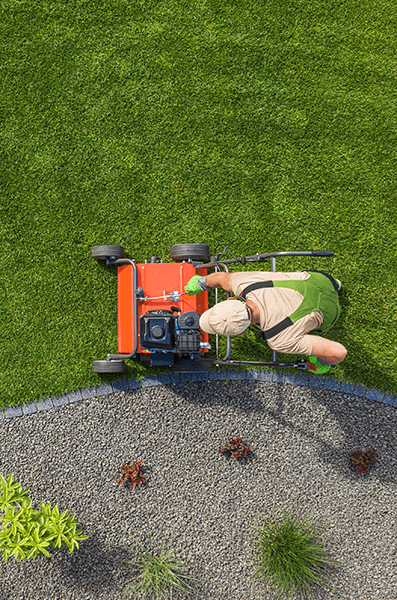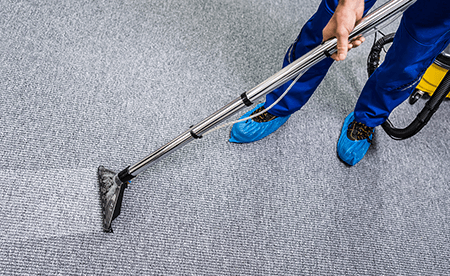Managing a multi-tenant property comes with unique challenges, especially when it comes to keeping the building clean and welcoming through changing seasons. Seasonal shifts—winter’s ice, spring’s pollen, summer’s dust, and fall’s leaves—require targeted cleaning strategies to maintain tenant satisfaction, ensure safety, and protect the property’s value. Below are practical, seasonal cleaning tips for multi-tenant properties to keep them in top shape year-round.
Spring: Tackling Pollen and Allergens
Spring’s beauty comes with a downside: pollen. Multi-tenant properties, especially those with large windows or outdoor common areas, can accumulate pollen and debris, triggering allergies and affecting curb appeal. Property managers should focus on proactive cleaning to keep spaces healthy and inviting.
Exterior Maintenance
- Power Wash Surfaces: Pollen sticks to windows, siding, and walkways. Schedule professional power washing for building exteriors, patios, and parking areas to remove pollen, dirt, and winter grime. Aim for early spring before peak pollen season.
- Clean Outdoor Furniture: Wipe down or pressure-wash outdoor seating, tables, and railings in common areas. Store cushions during heavy pollen periods to reduce cleaning frequency.
- Maintain Landscaping: Trim overgrown shrubs and trees to minimize pollen spread. Work with landscapers to plant low-allergen species, such as roses or dogwoods, around entrances.
Interior Cleaning
- Deep-Clean Windows and Vents: Hire professionals to clean interior and exterior windows to remove pollen buildup. Dust and vacuum window sills, blinds, and HVAC vents to prevent allergens from circulating.
- Refresh Upholstery and Curtains: Steam-clean or launder curtains, rugs, and upholstered furniture in lobbies or lounges. This removes pollen and dust mites, improving air quality for sensitive tenants.
- Stock Restrooms with Supplies: Spring allergies increase tissue and hand soap usage. Ensure restrooms in common areas are well-stocked, and check dispensers daily.
💡Pro Tip: Offer tenants allergy-friendly tips, such as using doormats or removing shoes at entrances, via a newsletter or bulletin board. This builds goodwill and encourages shared responsibility for cleanliness.
Summer: Managing Dust and High Traffic
Summer brings dust, especially in urban or dry regions, and increased foot traffic from tenants and visitors. Multi-tenant properties must stay clean and functional despite the heat and activity.
Exterior Maintenance
- Sweep and Hose Down Walkways: Dust and debris accumulate quickly in summer. Sweep walkways and parking lots weekly, and hose down high-traffic areas to keep them dust-free. Use water-efficient nozzles to comply with local water restrictions.
- Inspect and Clean AC Units: Dusty air filters reduce cooling efficiency and circulate particles. Have HVAC systems serviced before summer peaks, and replace filters every 1–2 months.
- Maintain Trash Areas: Warm weather accelerates odors in dumpster areas. Schedule frequent trash pickups and clean bins regularly to deter pests and maintain a pleasant environment.
Interior Cleaning
- Focus on High-Touch Surfaces: Door handles, elevator buttons, and railings collect sweat and dirt in summer. Disinfect these surfaces daily using EPA-approved cleaners to prevent germ spread.
- Control Dust in Common Areas: Vacuum carpets and dust surfaces like ledges, baseboards, and light fixtures weekly. Use microfiber cloths to trap dust effectively.
- Address Spills Immediately: Summer events or tenant gatherings can lead to spills in shared spaces. Equip cleaning staff with portable spot-cleaning tools for quick responses.
💡Pro Tip: Consider hosting a summer tenant event, like a barbecue, in a clean outdoor common area. A well-maintained space boosts tenant satisfaction and showcases your property’s appeal.
Fall: Managing Leaves and Preparing for Weather Shifts
Fall introduces falling leaves, damp conditions, and the transition to cooler weather, which can create clutter and hazards in multi-tenant properties. Property managers should focus on keeping exteriors tidy and preparing interiors for the upcoming winter.
Exterior Maintenance
- Remove Leaves Regularly: Fallen leaves can clog drains, create slippery walkways, and detract from curb appeal. Schedule weekly leaf removal using rakes, leaf blowers, or a landscaping service. Ensure storm drains and gutters are clear to prevent flooding during fall rains.
- Inspect Roofs and Gutters: Hire professionals to check roofs for loose shingles and clear gutters of leaves and debris. This prevents water damage and ice dams as winter approaches.
- Clean and Store Outdoor Furniture: Wash and store outdoor furniture, umbrellas, and cushions to protect them from moisture and extend their lifespan.
Interior Cleaning
- Refresh Entrance Mats: Replace summer mats with heavy-duty, absorbent ones to handle mud and rain tracked in by tenants. Clean or rotate mats frequently to maintain effectiveness.
- Deep-Clean Common Areas: Vacuum and dust lobbies, hallways, and stairwells to remove summer dust and prepare for increased indoor activity. Schedule a professional cleaning for carpets and upholstery before winter.
- Check Heating Systems: Dust and service radiators, baseboard heaters, or HVAC units to ensure efficient operation. Replace filters to improve air quality as indoor heating begins.
💡Pro Tip: Post reminders for tenants to shake off umbrellas or wipe shoes before entering to reduce interior mess. An umbrella stand, or umbrella covers, at entrances can also help keep floors dry.
Winter: Battling Ice, Snow, and Indoor Grime
Winter brings snow, ice, and slush, which tenants track into common areas, creating slippery surfaces and excess dirt. Property managers must prioritize safety and cleanliness to prevent accidents and maintain a professional appearance.
Exterior Maintenance
- Clear Snow and Ice Promptly: Invest in a reliable snow removal service or ensure on-site staff are equipped with shovels, snow blowers, and eco-friendly de-icing products. Clear walkways, parking lots, and entrances before tenants arrive. Check local regulations for compliance, as some cities require snow removal within specific timeframes.
- Stock Up on Supplies: Keep ample supplies of ice melt and sand on hand. Place durable, absorbent mats at all entrances to capture moisture and debris from boots. Replace or clean mats weekly to prevent saturation.
- Inspect Drainage Systems: Ensure gutters and drains are clear to prevent ice buildup, which can lead to water damage or hazardous walkways.
Interior Cleaning
- Increase Floor Cleaning Frequency: Vacuum or mop high-traffic areas like lobbies and hallways daily to remove salt, mud, and water. Use wet/dry vacuums for quick cleanups during storms.
- Deep-Clean Carpets: Schedule professional carpet cleaning midway through winter to remove embedded salt and dirt. This prevents long-term damage and keeps common areas fresh.
- Monitor Indoor Air Quality: With windows closed, indoor air can become stale. Replace HVAC filters monthly and consider portable air purifiers in shared spaces to reduce dust and allergens.
💡Pro Tip: Communicate with tenants about cleaning schedules and encourage them to report spills or hazards promptly. A simple email or posted notice can foster cooperation and reduce liability.
Conclusion
Effective seasonal cleaning for multi-tenant properties requires planning, communication, and adaptability. By addressing winter’s hazards, spring’s allergens, summer’s dust, and fall’s leaves with targeted strategies, property managers can enhance tenant comfort, ensure safety, and maintain the property’s value. Start preparing now by reviewing your cleaning contracts, stocking supplies, and engaging tenants in the process. A clean, well-maintained building not only attracts and retains tenants but also reflects your commitment to excellence.



